 In certain Catholic prophetic circles, there is a concept known as the “three days of darkness,” according to which a judgment will come upon the earth, and it will be preternaturally shrouded in darkness.
In certain Catholic prophetic circles, there is a concept known as the “three days of darkness,” according to which a judgment will come upon the earth, and it will be preternaturally shrouded in darkness.
One of the most famous quotations about this event is attributed to the Italian mystic Bl. Anna Maria Taigi (1768-1837). She is said to have stated:
There shall come over the whole earth an intense darkness lasting three days and three nights. Nothing can be seen, and the air will be laden with pestilence which will claim mainly, but not only, the enemies of religion. It will be impossible to use any man-made lighting during this darkness, except blessed candles. He, who out of curiosity, opens his window to look out, or leaves his home, will fall dead on the spot. During these three days, people should remain in their homes, pray the Rosary and beg God for mercy. All the enemies of the Church, whether known or unknown, will perish over the whole earth during that universal darkness, with the exception of a few whom God will soon convert. The air shall be infected by demons who will appear under all sorts of hideous forms.
Another mystic—Marie-Julie Jahenny (1850-1941)—is said to have claimed that only 100% wax candles will work, and this has led to people selling pure beeswax candles to Catholic households for use during the event.
Some Catholics have been very concerned about this event, because if it were to occur—as described—it would be terrifying.
What should we make of the prediction? How credible is it? And what does the Church have to say about it?
The answer to the last question is easy: Nothing. The Church has nothing to say about it. A search of the Vatican web site reveals no occurrences of the phrase “three days of darkness.” The three days of darkness is not a matter of Church teaching.
Can it be supported by the Bible? Web sites advocating the three days of darkness regularly appeal to the ninth plague of the Exodus (Exod. 10:21-29), in which God caused three days of darkness in Egypt. However, this is a reference to a historical event, not a prediction of a future one.
Appeal also is made to Revelation 6:12 and 16:10—the sixth seal and the fifth vial. These chapters in Revelation most likely pertain to events early in Church history, not our future, and while both passages involve darkness, there is no mention of it lasting three days.
Consequently, the Bible does not contain a prediction of the three days of darkness. However, he could still reveal it through credible private revelations, and it is here that we run into a problem. George Ryan—who passes no judgment on the three days of darkness—writes:
The origins of the prophecy are unclear, but it has been attributed to a number of saints and mystics throughout history. Some believe it comes from St. Hildegard of Bingen, while others attribute it to St. Patrick or St. Teresa of Avila.
This is a problem, because if any of these figures predicted the three days of darkness, it should be possible to find the prediction in their writings, and nobody has been able to do so. It thus appears that some advocates of the view have attempted to give it an air of antiquity by associating older saints with it (St. Patrick lived in the 400s, St. Hildegard of Bingen lived in the 1100s, and St. Teresa of Avila lived in the 1500s), even though they made no predictions about it. The idea thus appears to be of more recent origin.
Of course, there are numerous visionaries operating today, and some of them do speak of the three days of darkness. However, what these visionaries have in common is that none of them have been investigated and had their visions approved.
Some visionaries authentically receive private revelations, but some are hoaxers—because hoaxers exist in every age, including our own—while others may be innocently imagining things based on what they have read in visionary literature.
This is why it is important to have competent investigations done rather than simply giving credence to claims of purported revelations (see, for example, the case of the once very popular Canadian mystic Fr. Michel Rodrigue, who was repudiated by his bishops and whose prophecies have subsequently been falsified).
If we set aside disapproved and uninvestigated claims, what are we left with?
Some advocates of the three days of darkness have claimed that St. Pio of Pietrelcina (Padre Pio, 1887-1968) predicted it. However, the quotation was given with no traceable source, and the Capuchin order that he belonged to has denied that he ever made such a prediction. This also appears to be a case of someone trying to lend the prediction credibility by associating it with a popular modern saint.
What about the most famous quotation concerning the three days of darkness—the one we quoted earlier that is attributed to Bl. Anna Maria Taigi?
Various web pages attribute it to a book titled Private Prophecy, which was published in 1863. This is good, because books of that era have been digitized and are searchable online. However, when we check Archive.org or Google Books, they turn up no book by this title. The same is true if you make the title plural—Private Prophecies (Archive.org, Google Books).
One web site lists the book as having the Italian title Profezie Privata and adds that it was published in Rome. However, the same thing happens again on Archive.org and Google Books. There are no books of this title on record.
After considerable searching (including by other means), it appears that this book simply never existed. Perhaps someone saw the above quotation attributed to a private prophecy of Bl. Taigi from 1863 and thought it was a book title.
However, here we encounter another difficulty. The website The Great Catholic Monarch and Angelic Pontiff Prophecies—which supports the three days of darkness—acknowledges that they were not mentioned until 1863 or 1864—26 or 27 years after her death.
During life, Bl. Taigi reportedly saw an orb-like “mystic sun” that revealed things to her about the future, and she told these to her spiritual director, Raffaele Natali. The website states:
There is no question Bl Anna Maria Taigi saw in her mystic sun several visions of “clouds of darkness” and other horrific disasters descending upon the earth during the times of the punishments, this has been mentioned during her beatification process as seen above. However, the mention of a specific time-frame of Three Days for the foretold “purge” of the earth was first allegedly revealed by her spiritual director, D. Raffaele Natali, who was not only her strongest supporter during her beatification process, but also gave ample testimony regarding her visions, for in obedience, she had told him everything.
According to an article in the El Ermitaño, (Nº 155, Oct. 26, 1871), D. Natali revealed the following during c. August of 1864, a year after her beatification process was opened by Bl. Pius IX in 1863:
“It is very true that the venerable Servant of God announced the scourge of the three days of darkness spread over all the earth. . . .
“In these circumstances, the windows should be closed, and leaning over them should be avoided, and it will be imperative to pray the holy Rosary and pray.”
The website also relates an account in which Natali may have mentioned the three days in the previous year (1863).
This raises grave questions about the quotation attributed to Bl. Taigi—as well as any other quotations attributed to her on the three days of darkness.
The idea was apparently related more than a quarter century after her death by a now-elderly spiritual director. We have to take his word for what she told him, and we are at the mercy of his memory and his honesty, as well as the accuracy of the reports concerning what he said.
Under these circumstances, and given the known problems with other quotations on this topic (such as the false Padre Pio quotation), we should not place confidence in any alleged verbatim quotations attributed to Bl. Taigi—especially lengthy ones—in the absence of verifiable documents written during her life.
Then there is the fact that—as far as I have been able to determine—these revelations were not subject to an ecclesiastical investigation into their validity. When a person’s cause for canonization is opened, a check is made to see whether they said anything that contradicted the Faith. However, a judgment is not made about the validity of any revelations they claimed to have received. That is a separate process, which I have no evidence of being performed in this case.
While I may perform more research in the future, thus far I have not been able to verify any reference to the three days of darkness in an approved apparition. Instead, I have found a highly problematic set of quotations and attributions that appear to be the product of the Apparition Rumor Net rather than competent scholarship.
As vivid and compelling as the prediction of the three days of darkness is, I would not recommend that Catholics be terrified of it or that they invest it with credence given the present state of the evidence.
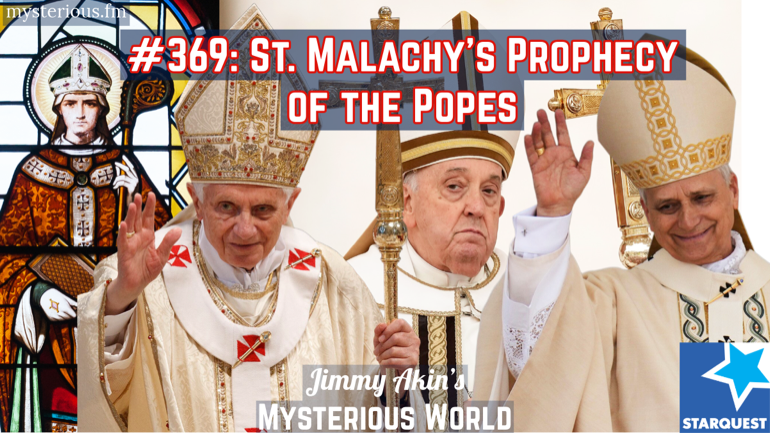

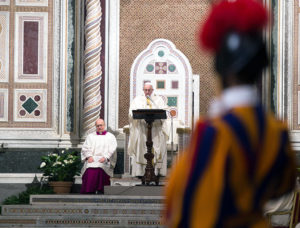
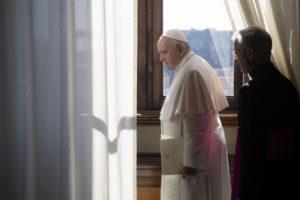
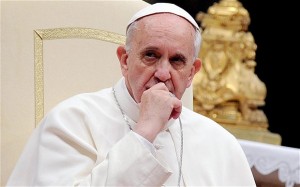
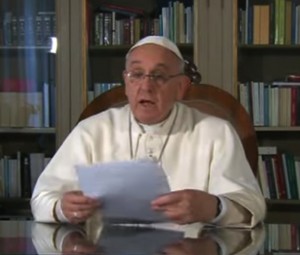
 In certain Catholic prophetic circles, there is a concept known as the “three days of darkness,” according to which a judgment will come upon the earth, and it will be preternaturally shrouded in darkness.
In certain Catholic prophetic circles, there is a concept known as the “three days of darkness,” according to which a judgment will come upon the earth, and it will be preternaturally shrouded in darkness.